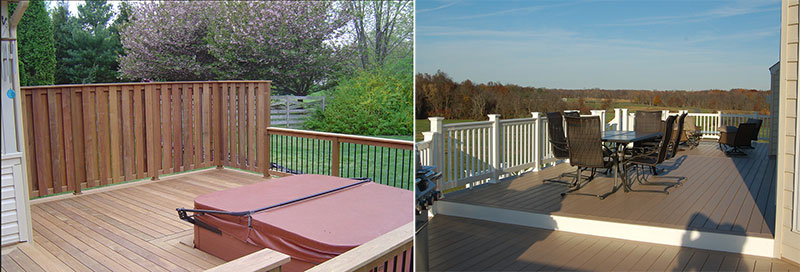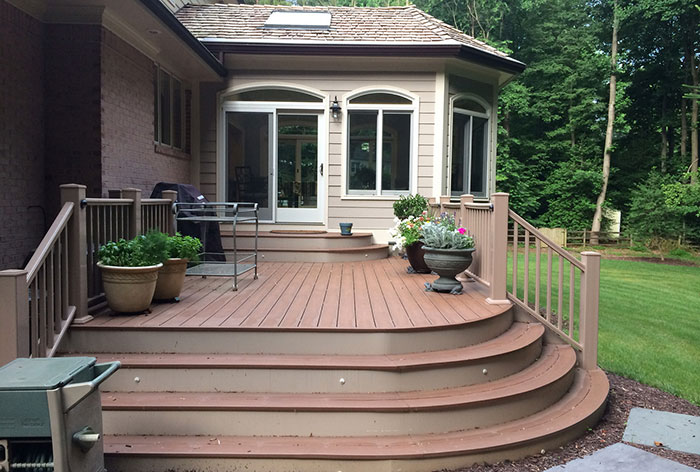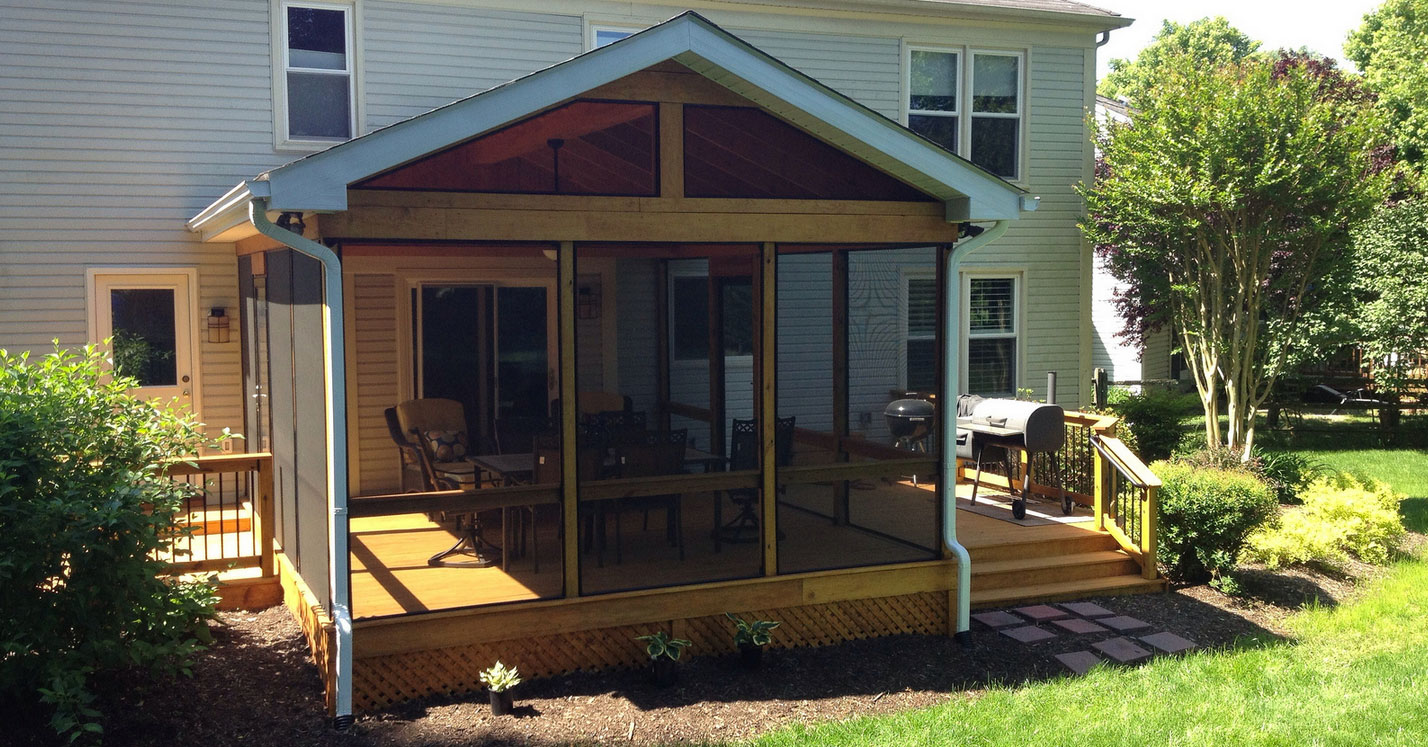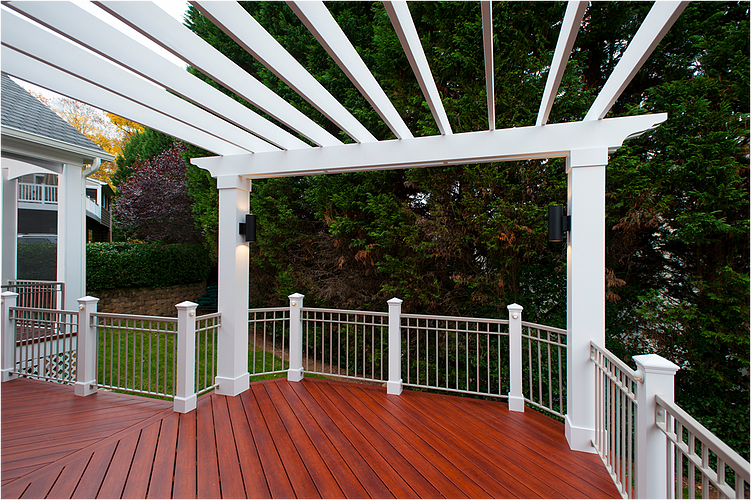
Low-Maintenance Decks vs. Wood Decks
Once you’ve decided that you want to add a deck to your home, one of the next decisions you’ll need to make is what material you want to use. You have a number of options, ranging from pressure-treated wood to synthetic materials like capstock and ASA, and it can be tough to make a decision if you’ve never built a deck before.
There’s no universal “right choice” when it comes to choosing a deck material. The best solution for someone else may not be the best solution for you—which is why it’s important to understand some of the key differences between popular building materials.
Wood Decks
Wood is generally considered the “more bang for your buck” option because it’s a relatively low-cost material with a high return on investment (a survey in Home Remodeling magazine found that homeowners recoup an average of 87% of the money they spent building a pressure-treated wood deck when it comes time to sell). Not only is wood cost-effective, it also looks great. Many homeowners appreciate the classic look of pressure-treated wood, as well as the ability to customize their deck with different color stains and paints.
The major disadvantage of wood is that it requires some maintenance to keep the deck in good shape. You’ll most likely need to stain a wood deck annually to prevent fading, and you may need to regularly sand it to prevent splinters. You can clean the deck using a power washer, but this wears down the wood over time. The best way to clean a wood deck is with a hose and soft bristle brush, but this, of course, is going to be time consuming.
While wood requires some extra work, the lower cost, resale value, and aesthetic makes it worth it to some homeowners.
Who Should Add a Wood Deck: people who plan to sell their home within the next few years, people who are attached to a classic deck appearance, people who are willing and able to keep up with maintenance.
Low-Maintenance Decking Materials
Low-maintenance materials are typically thought of as a longer-term investment option. These materials cost more up front but require a lot less maintenance than wood (as the term “low-maintenance” implies), making them a good choice for someone who plans to stay in their home for a long time. Some of the different materials include:
1. PVC
This plastic material has no wood in it, making it denser and more scratch- and stain-resistant than other decking materials. Without the wood core, there’s also no risk of mold or mildew, making maintenance incredibly minimal. PVC is a great choice if you plan to build your deck close to the ground or anywhere near water. The primary drawbacks are that this is one of the more expensive material choices, and it does have a plastic look that some homeowners find unappealing.
2. Capstock
Capstock is a recycled material made from composites (such as plastic and wood fiber core) with an exterior layer of vinyl (PVC). It’s a less expensive option than PVC and comes in a wide variety of colors, styles, and brands, giving homeowners a lot of flexibility. It’s a tough material that does not fade, stain, or scratch. The primary disadvantage is that because it has a composite core, it needs to be able to breath in order to prevent mold and mildew. That means that you should only use capstock if you’re building your deck at least three feet above the ground.
3. ASA
ASA decking is a capped material that looks the most like natural wood of the three low-maintenance options described here. It’s not composite, so it can be installed close to the ground. ASA will not fade, stain, scratch, or warp, making it the best choice in terms of longevity. The main downside is the price—this is the most expensive of the three low maintenance options, so it’s best-suited to people who plan to use their deck for many years to come.
Who Should Add a Low-Maintenance Deck: people who plan to stay in their home a long time, people who anticipate heavy wear and tear on their deck, and people who want to build their deck close to the ground or a body of water.
If you’re still not sure what material to choose, talk to a trusted home contractor in your area. Any good deck contractor should have enough experience building in the region to recommend a material that will suit your home.





